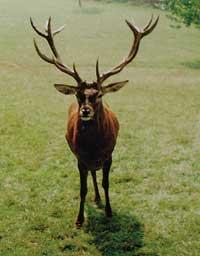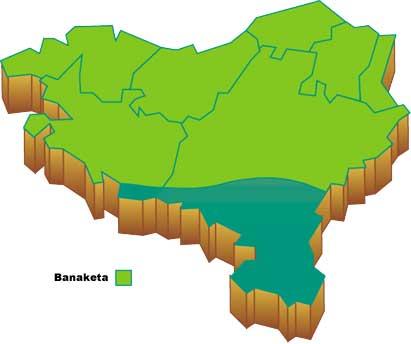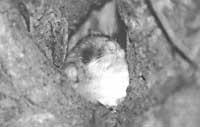Deer: an animal of great appreciation
1999/02/01 Sarasua Imaz, Jose Jabier Iturria: Elhuyar aldizkaria
Based on the criterion of geographical distribution of animals, zoologists divide the world into five zoogographic regions. When fixing the areas and limits of these regions, the delimitations of nations are not taken into account, but those that characterize the main geographical accidents (deserts, oceans, mountain ranges). In some cases, these natural limitations become the cause of genetic disruptions.
Therefore, as mentioned above, the world appears divided into five zoogographic regions: the Holarctic region, the eastern region, the neotropical region, the Ethiopian region and the Australian region.
The largest region is the Holarctic. This region covers all of Europe, North America, North Africa and much of Asia. The Ethiopian region would include the southern Sahara part of Africa. In the Australian region is Australia itself and its islands. The neotropical region would extend from Central America to South America. And finally, the eastern region would be formed by the territories located south of the Himalayas.
The protagonist of this article resides in the Holarctic region. This large region can be divided into two subregions, the Palearctic and the Nearctic. The Palearctic comprises Europe, much of Asia and North Africa. In the North American sub-region only.
Several biomes from north to south are distinguished in the palearctic and nearctic area. Both in the palearctic and in the nearctic the tundra appears in the north. In the Palearctic itself, but further south, the taiga (conifer forest); further south still the hardwood forest. The following area is divided into two parts: on the one hand, in the circummediterranean area the weeds and the Mediterranean forest extend and to the south the desert; and on the other, in part of Asia and Russian Europe the steppe predominates. And to the south of the steppe appears the desert progressively.
In the Nearctic region the main North American mountain ranges appear aligned parallel to the coast. As a result, conifer forests extend south. Deciduous forests occupy the eastern part of the continent. Between them the countryside of America is interspersed. And to the south, the desert.
Deer ( Cervus elaphus)
The deer inhabits the palearctic area. He likes more than one survival biome: Mediterranean forest, deciduous forest, conifer forest, high mountain areas,…
The ability to live in more than one biome makes it a "gradient" in size. The larger specimens can be seen in the north, limiting the smaller ones to the south. Thus, those from Siberia are 350 kg and the smallest specimens, of about 100 kg of weight, live in Berlin. In this respect, this species has several subspecies. The most common in Euskal Herria is the bolibari Cervus elaphus. After defining a little the place of life of the deer, it would be advisable to make ethological references.

This animal, which lives in a group, meets in two ways his companions. On the one hand, there are groups of females. In these groups mothers take care of their children. On the other hand, groups of males are formed. Females are made up of several families. And each family, with two or three children. In trouble-free periods each family moves on its own. As the situation worsens, groups are also gathering to seek mutual support. In these groups the hierarchy is clearly marked, surpassing an adult female.
During the summer the deer, males and females, climb to high altitudes to travel the reverse way in winter. At the end of summer comes the heat. This time is also called needle or stripe time. The males penetrate the areas of the females arriving towards them. The older male will try to catch as many females as possible. This male will throw huge needles to set the boundaries of his area and tell him that he is his boss. Young males walk around to conquer and expel the older male. As a result, there are great confrontations between the one who wants to defend the territory and the one who comes to conquer (these struggles serve to indicate who is the strongest, never shed blood).
Although the zeal is one month, the older male will not last more than a week as the principal of the territory. The defense of the territory involves an enormous energy expenditure for the main male and in a few days another male will expel from that territory. The young are born eight months later and grow up in the mother's shelter during the first year. At the end of the heat, males and females will follow the same trend, separating and separating each group.
Deer fall into large old branches in winter and new ones begin to emerge. The branches have the same constitution of the bones, since they are largely formed by phosphorus and calcium. As a result, deer should eat foods that provide these products. Females feed like males, which favors healthy growth of the brood in the mother's womb.
The sex hormone called testosterone is of fundamental importance in the process of branch renewal. If we burned a male deer, it would not renew the branches. Moreover, the injection of this hormone could restore the branches. Branching plays a prominent role among deer. It shows the category of the animal (both in front of females and in front of others), clearly explaining its strength. But it also has another function, it becomes an effective defensive weapon against predators.
The deer is herbivorous and takes advantage of its long end to reach the leaves of the trees. According to known data (fossils), this anointing appeared on earth about two million years ago. On the upper plesitocene (120,000 B.C.) man has been hunting since then. Today it is a prized animal. However, the functions of ancient and current hunting have nothing to do with it. It was once an important source of food and was one of the main ingredients of the human diet. Currently, however, it is hunted as a trophy (to hang the measure of branching on the wall). In the world of hunting much is paid for a branch of deer. However, feeding has completely lost its function.
This animal is not very close to the farmer, as it enters his farm and lands causing damage. However, this animal is essential in our mountains for its ecological function. To do this, appropriate steps must be taken to control the damage occurring in rural areas and to prevent uncontrolled hunting. A solution to control the deer population can be the expansion/proliferation of natural predators, such as the wolf. And on the other hand, the Administration's support for the garbage dumps. To see if it is possible to see this animal again in its wild state in our mountains.

Gai honi buruzko eduki gehiago
Elhuyarrek garatutako teknologia





